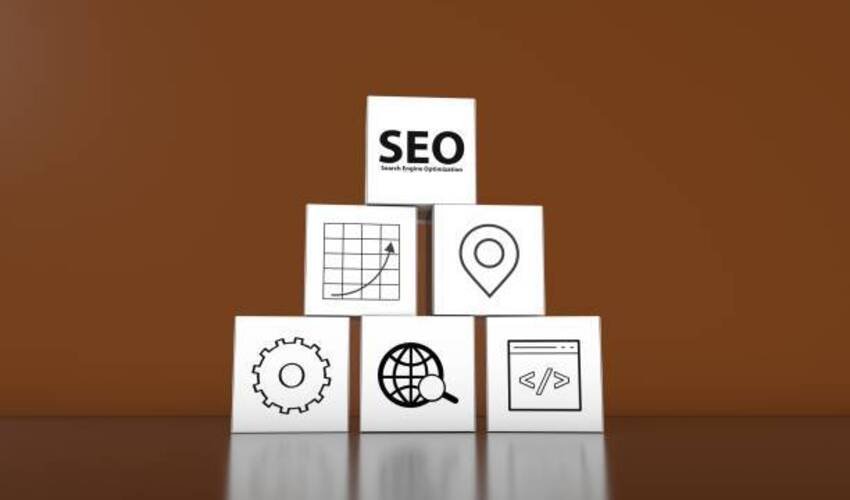Every website wants to acquire two decent objectives via its digital marketing strategy. These objectives are searchability and visibility. As your website becomes more searchable, it becomes more visible. This enhanced visibility will help the brand attain more visitors and elevate the website’s conversion rate. SEO company in Tauranga will help you to implementing a powerful SEO strategy for making your brand more searchable. So, here we’ll explain eight major components that constitute a strong SEO campaign for small businesses.
1. Content
Every SEO strategy depends upon your website having original, engaging, interactive, educational, high-quality, and shareable content. Everything else – every single factor related to search engine optimization – comes after that! Find which issues are bothering your niche, and then produce content related to solutions to these problems. Answer your target audience’s questions and target the right keywords. Make your articles at least 1,000-worded, thereby increasing their chances of being found by search engines. Publishing relevant content drives more organic traffic to your website. And content isn’t just text-based. It has multiple formats such as:
- Videos
- Podcasts
- Webinars
- Infographics
- Ebooks/whitepapers
2. Keywords
Keywords define which sort of content you publish and what kind of audience you address. That’s why targeting the right keywords is essential for a successful SEO strategy. Now, we know that Google’s 1st page always gets the girl, i.e., over 90% of digital traffic. That’s why it’s unwise to target the keywords with a thick volume. Search for words/phrases that also offer less competition. That’s why marketers focus on long-tail keywords. In short, instead of targeting “SEO,” they target “strong SEO strategy for business.” This way, you target people who are more likely to convert.
3. Local SEO
More internet users are now searching for businesses with “near me” in their queries. Do you know that over 40% of users look for local brands? Half of them visit that local brand within 24 hours. And this number is even higher (over 70%) among smartphone users. No wonder local searches have an 80% conversion rate! That’s why you must utilize free SEO tools to maximize visibility and boost local traffic on SERPs. Among these tools, Google MyBusiness is the lifeblood of local SEO. If you wish to optimize for local queries, remember NAP. It stands for name, address, and phone number. Put all this information on your GMB account so more native customers can find your brand.
4. Link-building
When your website is hyperlinked to by an authority website, it’s called acquiring a high-quality backlink. It shows Google that your site is reliable and worthy of being ranked higher in search results. Remember that the quality of hyperlinks matters more than the sheer quantity. So, if spam/porn sites link back to you, it’s similar to getting a downvote on Reddit. Unfortunately, link-building is a more challenging aspect of SEO but, besides content, it’s the most important one! So, leverage your networks and convince people to share your content. Also, create effective and shareable content online. Another related factor is called internal linking we’ll explain now.
5. Internal Linking
When you hyperlink to another webpage on the same domain, it’s called internal link-building. This practice enhances a visitor’s experience on your website and helps users navigate it conveniently. Interlinking also boosts organic traffic to your website, in some cases by 40%! They also spread the link juice (the ranking authority) evenly throughout the website.
Moreover, web pages that lack internal hyperlinks are called “orphan pages.” These pages have no PageRank; therefore, Google doesn’t know they exist. So, neglect towards internal linking impedes your SEO endeavors.
6. Mobile Optimization
If you aren’t on board the mobile marketing bandwagon, it’d be impossible to build a strong SEO strategy. Statistics from last year show that over 50% of internet traffic comes from smartphone users. And Google is also ranking all websites based on how well they perform on mobile gadgets.
So, if you’re website isn’t optimized for hand-held devices, the chances are that you’re losing a large portion of your potential audience. Marketers must focus on whether their sites are visible and easy-to-navigate on smartphones.
7. Headlines
There’s a well-established principle regarding content marketing that everyone knows since the last decade. It’s called the “80/20 Rule,” and it states that – as the name suggests – 80% of viewers just read your post’s headline. In other words, only 20% of users bother to give the actual article a read. Most people will just skip the content if the heading isn’t interesting enough. That’s why creating creative and engaging headlines has become an integral component of your SEO strategy. Now, how can you make the captions more attention-grabbing? Add numbers and strong verbs to give your heading some authority. Ask a question and include the reader by putting the pronoun “you.”
8. Social Buttons
You know very well what social sharing buttons are! They allow you to publish your favorite articles online. But a study published in 2015 revealed that over 99% of mobile/desktop users have never used these buttons. Why don’t these buttons make sense to an average person on the internet?
It’s because these buttons aren’t created without considering the sort of content they’ll generate. Distorted texts or blurred images don’t appeal to your reader/s? Just look at how Medium has improved the art of social sharing. They allow the user to highlight certain portions of an article and then publish those words on Twitter. The tweet goes online without Medium’s handle, giving authority to the reader. That’s how you can popularize your content among your target audience.
Conclusion
There aren’t just ten “SEO ranking factors” or “components of SEO strategy,” like we’ve mentioned. Most of the myriads of ranking factors you may find online won’t even matter to every business. That’s why we’ve listed only the general components of SEO essential for every SMB’s digital marketing campaign.
We can categorize all these factors into four parts. The first pillar of SEO – content – doesn’t need any introduction. The second pillar – technical SEO – deals with how this content is crawled and indexed. The third pillar – on-page SEO – refers to stuff like improving your page’s loading time. Lastly, the fourth pillar – off-page SEO – are steps you take to promote your content, e.g., guest blogging. A combined effect of all these maneuvers contributes to the success of a brand’s SEO strategy.
Read Dive is a leading technology blog focusing on different domains like Blockchain, AI, Chatbot, Fintech, Health Tech, Software Development and Testing. For guest blogging, please feel free to contact at readdive@gmail.com.





